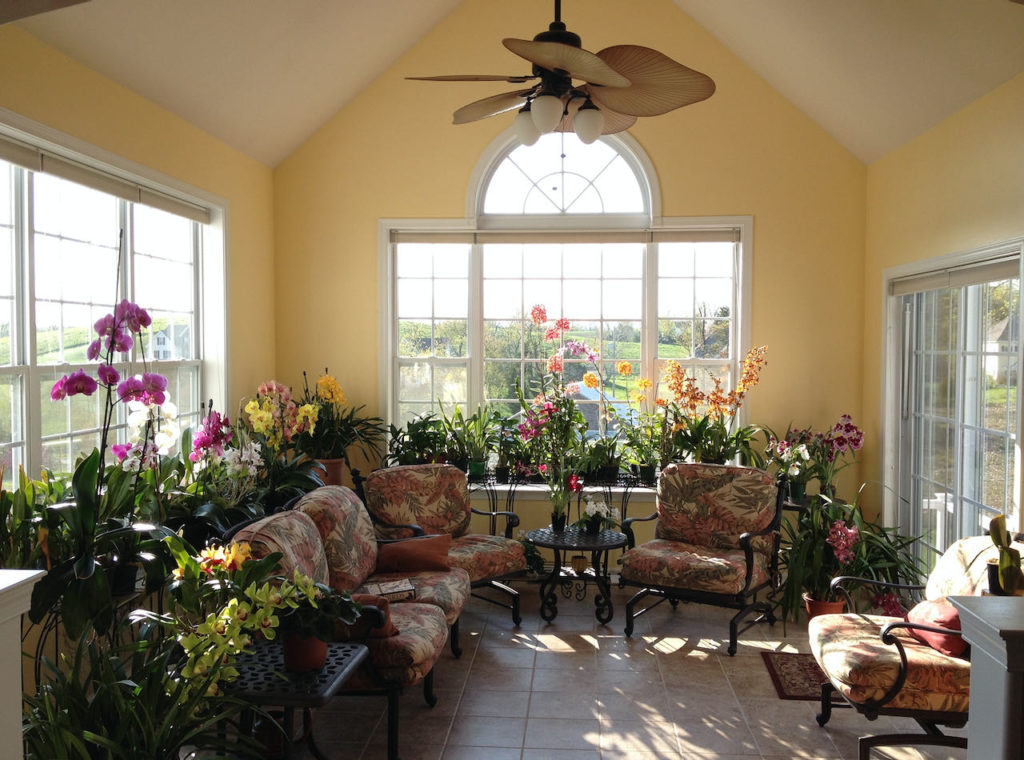The most readily available orchid plants that are adaptable to the home environment are members of the genera Phalaenopsis (moth orchid); Paphiopedilum (lady’s slipper orchid); Oncidium (dancing lady orchid); Dendrobium, specifically the Phalaenanthe type; and Cattleya. When choosing an orchid plant to purchase, select one with firm leaves and white roots with actively growing green, sometimes reddish green, tips.
Phalaenopsis and Paphiopedilum plants prefer 1000–1200 foot-candles of light, typical of a north, to northeast, to east windowsill. Cattleya, Oncidium and Phalaenanthe type Dendrobium plants prefer higher light of 2000–3000 foot-candles, typical of an east, to southeast, to south windowsill. Avoid southwest and west windowsills, as the afternoon sun is too intense and hot.
With the exception of Paphiopedilum, which is typically a terrestrial orchid, most plants of the above genera are epiphytes, and, in nature, would grow with their roots attached to branches and trunks of trees and exposed to humid breezes. Thus, air is as important as water to an epiphyte’s roots.
For additional information, see Oklahoma Gardening television segment “How to Get the Most Out of Your Orchid” on YouTube and join the Oklahoma Orchid Society.

